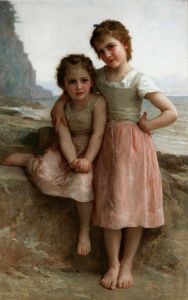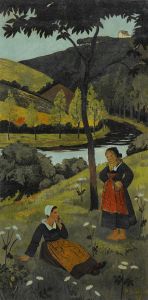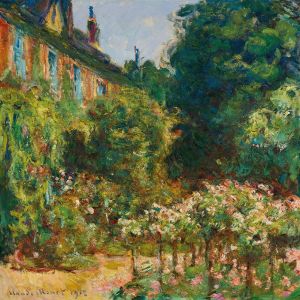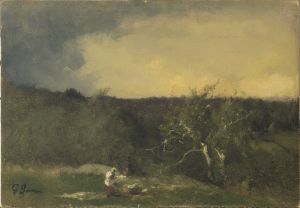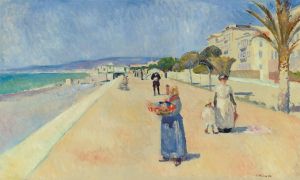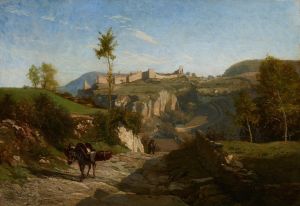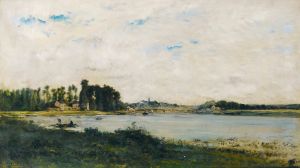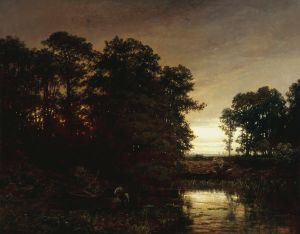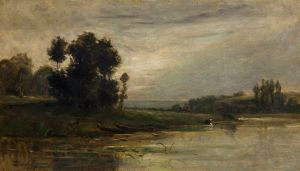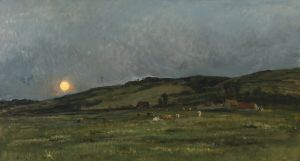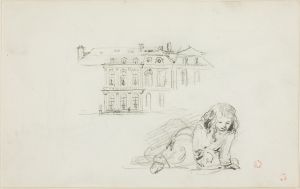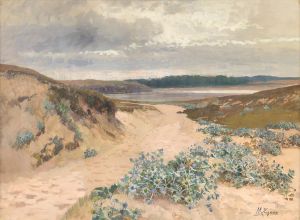
Bord De Riviére
A hand-painted replica of Charles François Daubigny’s masterpiece Bord De Riviére, meticulously crafted by professional artists to capture the true essence of the original. Each piece is created with museum-quality canvas and rare mineral pigments, carefully painted by experienced artists with delicate brushstrokes and rich, layered colors to perfectly recreate the texture of the original artwork. Unlike machine-printed reproductions, this hand-painted version brings the painting to life, infused with the artist’s emotions and skill in every stroke. Whether for personal collection or home decoration, it instantly elevates the artistic atmosphere of any space.
Charles François Daubigny was a prominent French painter associated with the Barbizon School, a movement that emphasized naturalism and was a precursor to Impressionism. One of his notable works is "Bord De Riviére," which translates to "Riverbank" in English. This painting exemplifies Daubigny's dedication to capturing the serene beauty of rural landscapes, a hallmark of his artistic career.
Daubigny was born in Paris in 1817 and was initially trained by his father, Edmé-François Daubigny, who was also a painter. He further honed his skills at the École des Beaux-Arts in Paris. Early in his career, Daubigny was influenced by the classical landscape tradition, but he soon gravitated towards a more naturalistic approach, inspired by the landscapes of the French countryside.
"Bord De Riviére" is a testament to Daubigny's mature style, characterized by loose brushwork and a keen observation of light and atmosphere. The painting depicts a tranquil river scene, capturing the subtle interplay of light on water and the lush greenery of the riverbank. Daubigny's use of a muted color palette and soft, diffused light creates a sense of calm and introspection, inviting viewers to immerse themselves in the peacefulness of nature.
Daubigny's approach to painting en plein air, or outdoors, was innovative for his time and influenced many younger artists, including the Impressionists. He often worked from his studio boat, which he called "Le Botin," allowing him to paint directly from the water and capture the changing effects of light and weather on the landscape. This method is evident in "Bord De Riviére," where the immediacy of the scene suggests it was painted on-site, with Daubigny responding directly to the natural environment.
Throughout his career, Daubigny exhibited regularly at the Paris Salon, where his work was well-received by critics and the public alike. His paintings were praised for their freshness and vitality, qualities that set them apart from the more formal and idealized landscapes of his predecessors. "Bord De Riviére" embodies these qualities, showcasing Daubigny's ability to convey the beauty and tranquility of the natural world with simplicity and elegance.
Daubigny's influence extended beyond his own work, as he played a crucial role in the development of landscape painting in the 19th century. His emphasis on naturalism and his innovative techniques paved the way for the Impressionists, who would further explore the effects of light and color in their work. Artists such as Claude Monet and Camille Pissarro admired Daubigny's work and were inspired by his approach to capturing the essence of the landscape.
In summary, "Bord De Riviére" is a significant work by Charles François Daubigny that reflects his mastery of landscape painting and his contribution to the evolution of modern art. Through his depiction of the serene riverbank, Daubigny invites viewers to appreciate the beauty of nature and the subtle nuances of light and atmosphere that define his artistic vision.





